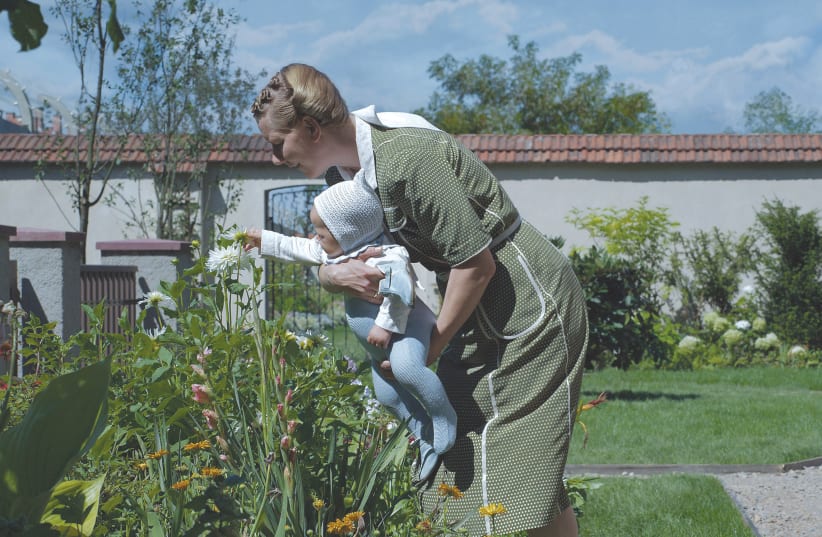As the focus shifts around the world, reflecting on historical instances of anti-Semitism, particularly the Holocaust, becomes pertinent. Jonathan Glazer’s latest film, “The Zone of Interest,” premiering in Israeli theaters on Thursday, delves into this theme with precision timing. Centered around Auschwitz commandant Rudolf Höss (portrayed by Christian Friedel), his wife Hedwig (played by Sandra Huller), and their five children, the narrative unfolds within a secure compound adorned with a beautiful garden amidst the grim backdrop of the death camp.
Adapted loosely from Martin Amis’s novel of the same title, the film offers a chillingly formal portrayal of the Höss family’s existence. Director Jonathan Glazer masterfully crafts an unsettling atmosphere, intending to provoke introspection. Renowned for his work on the science-fiction masterpiece “Under the Skin” (2013), where Scarlett Johansson portrayed an otherworldly being grappling with human complexities, Glazer’s unique perspective shines through in “The Zone of Interest.”
In this cinematic exploration, the Höss family represents the ordinary, while the audience assumes the role of intrigued outsiders witnessing a glimpse into the lives of a seemingly typical yet privileged household overshadowed by the atrocities of the past. The film evokes echoes of Hannah Arendt’s concept of “the banality of evil,” drawing parallels to the everyday facade maintained by individuals involved in heinous acts, much like Rudolf Höss’s dual persona as a family man and a key figure in the Auschwitz hierarchy.
The portrayal of Höss’s bureaucratic duties intertwined with domestic tranquility underlines the stark contrast between the mundane and the malevolent. While the Nazi meetings exude an air of decorum belying their sinister agenda, the horrors unfolding nearby seep insidiously into Hedwig’s seemingly serene domain, amplifying the sense of dread. Noteworthy scenes, such as Hedwig’s unsettling interaction with inmates’ belongings and her son’s disturbing play with extracted gold teeth, serve as poignant reminders of the underlying evil lurking beneath the veneer of normalcy.
The film skillfully captures the chilling ambiance through evocative sound design, particularly during nocturnal sequences resonating with the grim reality of the death camp. These auditory cues, depicting the harrowing sounds of suffering and brutality, offer a visceral insight into the nightmarish realm of Auschwitz, transcending visual limitations often faced by fictionalized Holocaust narratives.
While “The Zone of Interest” has garnered critical acclaim, including accolades at Cannes and multiple Oscar nominations, its narrative depth and prolonged focus on the characters’ banal existence raise questions about its pacing and overall impact. The persistent portrayal of vile characters engrossed in self-serving pursuits may test the audience’s endurance, prompting contemplation on the efficacy of prolonged exposure to such unsettling themes.
In conclusion, the film’s thematic exploration of banality intertwined with evil presents a thought-provoking yet discomforting viewing experience, underscoring the complexities of human nature in the face of historical atrocities.
